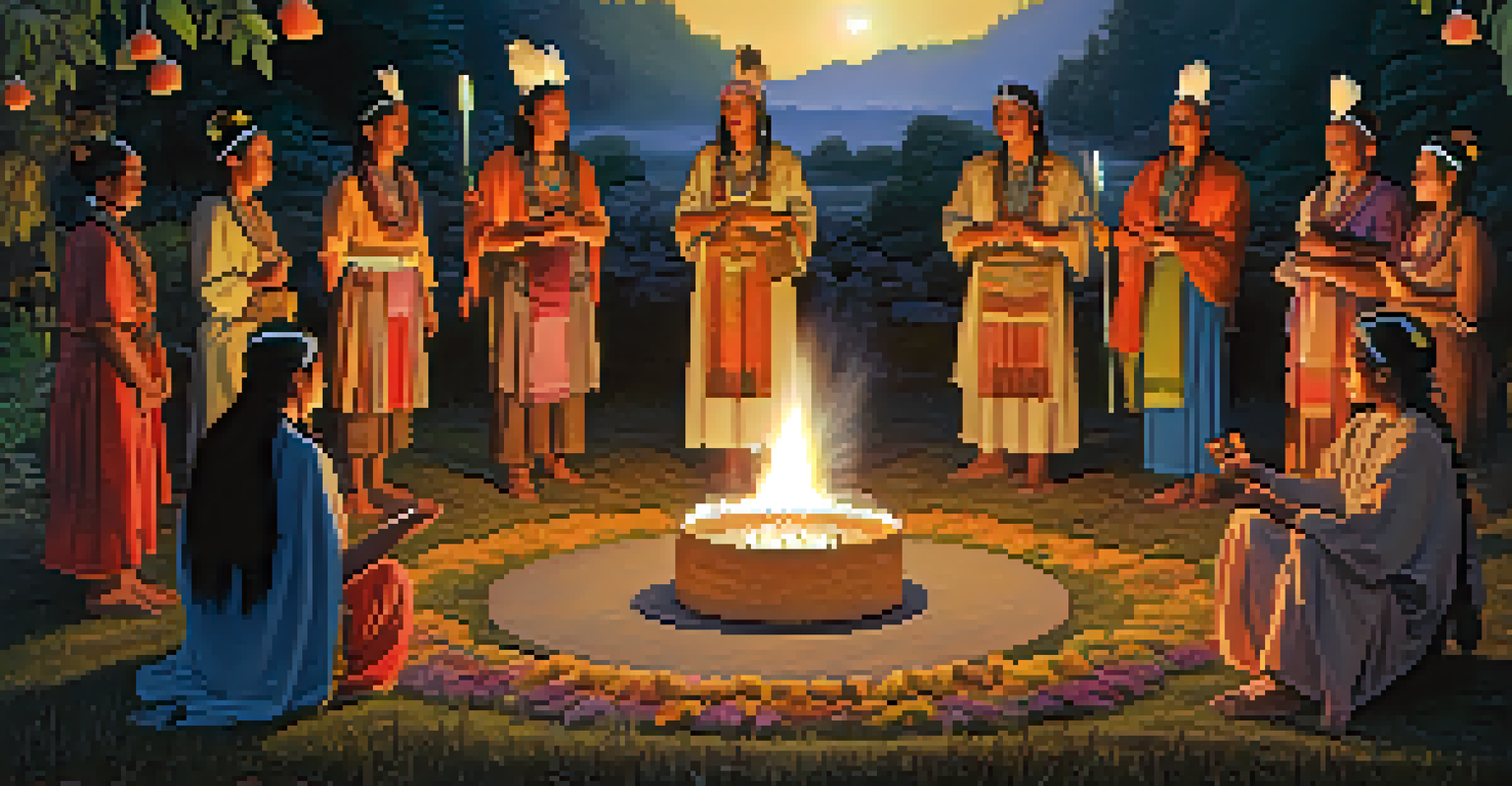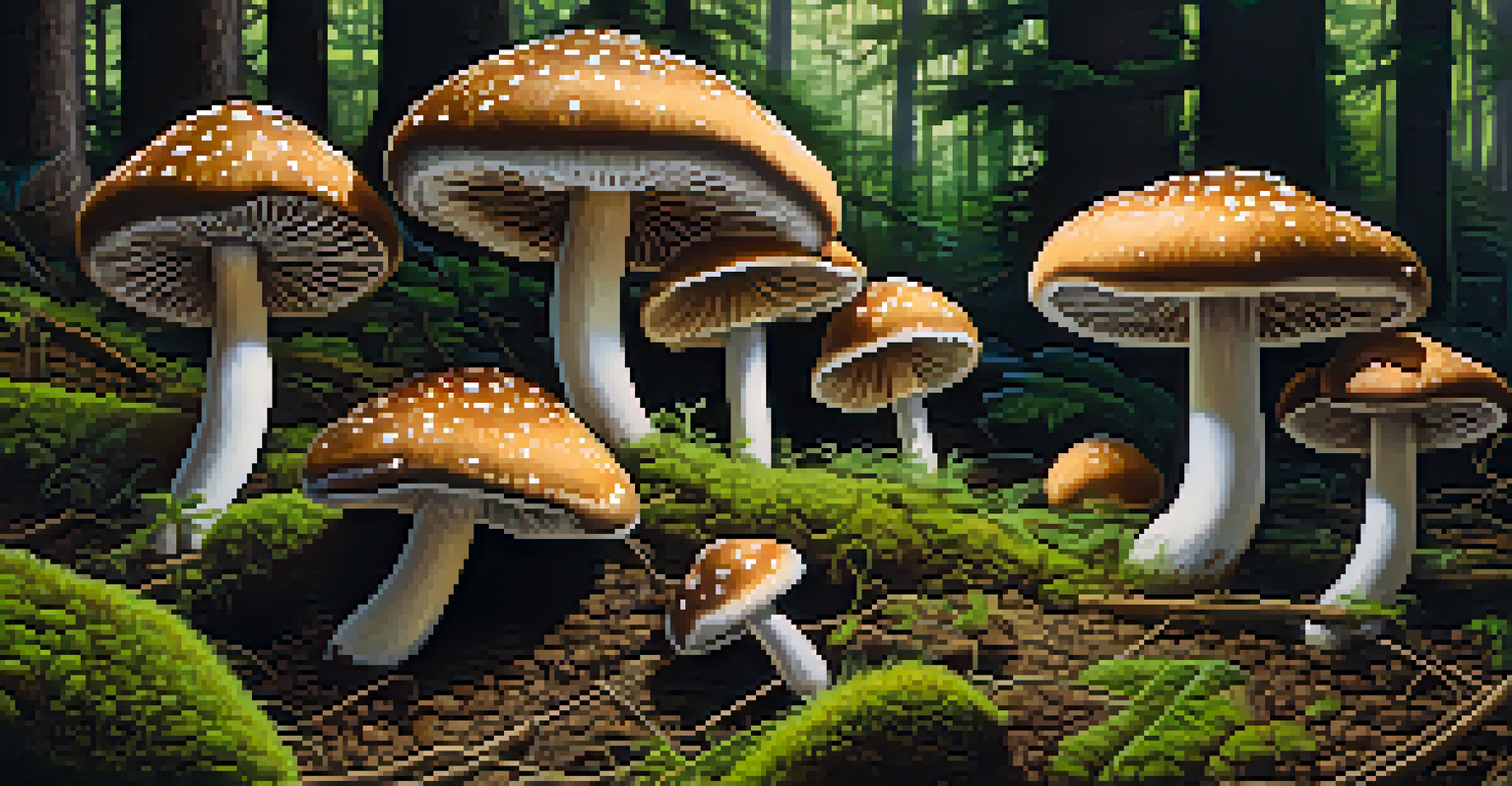The Intersection of Religion and Entheogen Legal Issues Today

Understanding Entheogens: A Brief Overview
Entheogens, substances often used in religious or spiritual contexts, include plants and fungi that alter consciousness. Common examples are peyote, psilocybin mushrooms, and ayahuasca. These substances have been utilized for centuries by various cultures to connect with the divine or the inner self, creating a rich tapestry of spiritual practices around the world.
Psychedelics can help us confront our fears and transform our understanding of ourselves and our place in the universe.
The term 'entheogen' itself comes from the Greek words meaning 'generating the divine within,' highlighting their intended purpose in spiritual experiences. In recent years, there has been a resurgence of interest in these substances, particularly within therapeutic and religious settings. This revival has sparked discussions about their legality and the implications for religious freedoms.
As society grapples with the legal status of these substances, it's crucial to understand their historical and cultural significance. The intersection of religion and entheogens raises questions about the balance between individual spiritual practice and regulatory frameworks.
Historical Context of Entheogens in Religion
Throughout history, many cultures have incorporated entheogens into their religious rituals. For example, the Native American Church uses peyote in ceremonies to connect with their spirituality and community. Similarly, ancient civilizations, like the Aztecs and the Incas, utilized various plants to enhance their religious experiences and communicate with their gods.

These practices underscore the deep-rooted connections between spirituality and nature. However, as Western societies began to modernize, many of these substances were demonized and criminalized, often under the pretext of protecting public health. This shift led to a significant disconnect between traditional practices and contemporary legal frameworks, challenging the rights of those who seek spiritual enlightenment through these means.
Entheogens and Spiritual Practices
Entheogens, such as peyote and psilocybin, have been used for centuries across various cultures to enhance spiritual experiences and connect with the divine.
Understanding the historical significance of entheogens is essential for assessing current legal issues. It provides context for why certain groups advocate for their use in religious settings and how these practices have persisted despite legal challenges.
Current Legal Landscape Surrounding Entheogens
The legal status of entheogens varies widely across the globe, often reflecting cultural attitudes toward these substances. In some countries, like Brazil and Peru, ayahuasca is legally protected for religious use, while in others, it is strictly prohibited. In the United States, the legal landscape is evolving, with some states and cities decriminalizing psilocybin and other entheogens for therapeutic or religious use.
The use of entheogens in a spiritual context can lead to profound insights and a deeper connection to the divine.
This patchwork of laws can create confusion for practitioners and religious organizations seeking to incorporate entheogens into their practices. Legal battles are increasingly common, as individuals and groups challenge existing laws that they perceive as infringing on their religious freedoms. These legal challenges often highlight the tension between individual beliefs and societal norms.
As discussions about mental health and the therapeutic potential of entheogens gain traction, the legal landscape may continue to shift. The outcome of these developments could significantly impact how entheogens are viewed in religious contexts.
Religious Freedom and Entheogen Use
The relationship between religious freedom and entheogen use is complex and often contentious. In many cases, individuals argue that their right to practice their religion includes the use of entheogens as sacraments. This raises important questions about how the law perceives spirituality and the need for personal expression in religious practice.
Recent court cases have illustrated the struggle to protect religious freedoms while balancing public safety and health concerns. For instance, some judges have sided with religious groups, allowing them to use entheogens in ceremonies under the Religious Freedom Restoration Act. These decisions can set precedents that influence future legal interpretations of entheogen use in religious contexts.
Legal Challenges for Entheogen Use
The legal status of entheogens varies globally, leading to confusion and legal battles as individuals seek to practice their spirituality in light of current laws.
Ultimately, the dialogue surrounding religious freedom and entheogens is ongoing, reflecting broader societal shifts toward accepting alternative spiritual practices. As more people advocate for their rights to use these substances, the legal framework will need to adapt.
The Role of Advocacy Groups in Legal Changes
Advocacy groups have played a critical role in the movement to legalize and protect the use of entheogens in religious settings. Organizations such as the Multidisciplinary Association for Psychedelic Studies (MAPS) and the Peyote Way Church have been at the forefront, pushing for policy changes and greater acceptance of entheogenic practices. Their efforts often focus on education and destigmatization, aiming to reshape public perception.
These groups not only provide resources and support for individuals seeking to navigate legal issues but also engage in lobbying efforts to influence legislation. By building coalitions with other organizations and communities, they amplify their voices in the political arena. This grassroots approach has proven effective in various states, leading to changes in laws that accommodate religious use of entheogens.
The impact of advocacy groups extends beyond legal frameworks; they also foster community and connection among those who share similar beliefs. This solidarity is vital in creating a culture that respects and acknowledges the spiritual significance of entheogens.
Implications of Legalizing Entheogens for Society
The potential legalization of entheogens for religious use could have profound implications for society at large. For one, it may lead to a broader acceptance of alternative spiritual practices and a shift in how mental health is approached. As more research highlights the therapeutic benefits of these substances, society might begin to embrace a more holistic view of healing.
Moreover, legalizing entheogens could contribute to an enriched cultural landscape, celebrating diverse spiritual expressions. This could foster greater understanding between different religious groups and promote dialogue about the role of entheogens in spiritual practices. Such inclusivity can help bridge gaps between traditional beliefs and modern interpretations of spirituality.
Advocacy for Religious Freedom
Advocacy groups are crucial in pushing for the legalization of entheogens in religious contexts, promoting education and destigmatization to reshape public perception.
However, the path to legalization is not without challenges. Ongoing education and awareness are necessary to address misconceptions and fears that may arise in the wake of legal changes. As society navigates this evolving landscape, open conversations will be essential.
The Future of Entheogen Use in Spirituality
Looking ahead, the future of entheogen use in spirituality appears promising yet uncertain. As more people advocate for their religious rights and the therapeutic potential of these substances becomes increasingly recognized, we may see further legal advancements. This evolution could lead to a more inclusive understanding of spirituality that embraces diverse practices.
Additionally, ongoing research into the benefits and risks of entheogens will likely inform public opinion and policy decisions. As scientific studies continue to reveal the potential of these substances for healing and personal growth, they may gain broader acceptance within both religious and secular communities. This could help dismantle the stigma historically associated with their use.

Ultimately, the intersection of religion and entheogen legal issues will continue to evolve, reflecting changing societal values and beliefs. The dialogue surrounding these topics will be crucial in shaping a future where spirituality and personal expression are respected and celebrated.